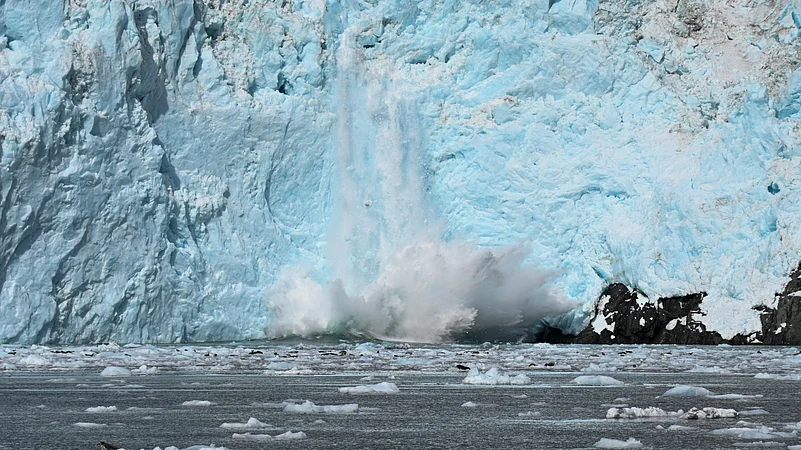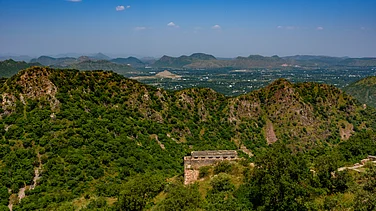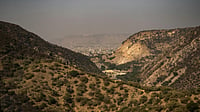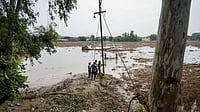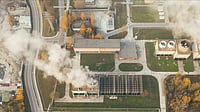A huge block of ice some 70 meters (230 ft) tall - the size of a 20-story building - broke off Argentina’s Perito Moreno Glacier into the aquamarine water below.
The phenomena attracts visitors to Argentina's most famous glacier for years. The process of breaking off of ice chunks is called "calving". This has started to alarm local guides and glaciologists, already anxious at a prolonged retreat by Perito Moreno, which had bucked the trend in recent decades by maintaining its mass even as warmer climates spurred faster glacial melting worldwide, reported Reuters.
"Ice calving events of this size haven't been very common at the Perito Moreno glacier over the past 20 years," Pablo Quinteros, an official tourist guide at Los Glaciares National Park in the southern province of Santa Cruz told Reuters.
"It's only in the last four to six years that we've started to see icebergs this big," he added during a visit in April.
The face of the glacier, which flows down from Andean peaks to end in the waters of Lake Argentina, had for decades held more or less steady, some years advancing and others retreating. But in the last five years, there's been a firmer retreat.
"It had been in more or less the same position for the past 80 years. And that's unusual," said Argentine glaciologist Lucas Ruiz with state science body CONICET, whose research focus is the future of Patagonian glaciers in the face of climate change.
"However, since 2020, signs of retreat have begun to be seen in some parts of the Perito Moreno glacier's face."
Glaciers around the globe are disappearing faster than ever, with the last three-year period seeing the largest glacial mass loss on record, according to a UNESCO report in March.
What’s Causing the Ice to Break?
Glaciers, like Perito Moreno, which end in freshwater lakes respond differently to climate change because they’re very sensitive to the topography of the land under and around them, according to a report published in the journal Nature.
In many of these glaciers, their size and movement are influenced more by the lake’s depth and surrounding landscape than by climate alone.
In Perito Moreno’s case, changes in the ice front are mostly caused by underwater melting, which depends on the lake’s water temperature. A warmer lake melts the base of the glacier, creating a “notch” that causes large chunks of ice to break off (calving).
This process of underwater melting and calving plays a key role in causing the dramatic ice breaks, often having a greater impact than the glacier’s surface movement.





